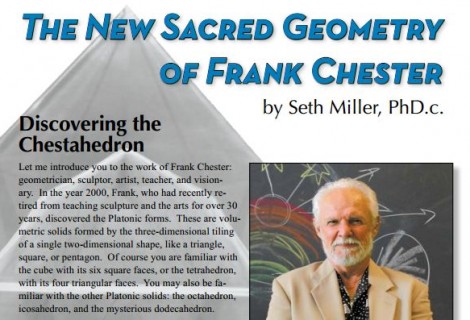An Esoteric Guide to Spencer Brown’s Laws of Form #1
« Previous Page | 1 2 3 4 | View All | Next Page »
The Greek’s Chaos is generally taken to be a sort of formless void, but for some reason nobody seems to recognize that our habit is generally to take this phrase “formless void” and take the “void” aspect as a thing we are talking about. That is to say, we take “void” as a noun and “formless” as a modifier. But the whole point is that we are trying to talk about the source of “all this”, and as GSB indicates, it can’t be a thing, even a “void”. It is more appropriate to speak only of “formlessness” rather than a formless void, and if you are now hearing echoes of century’s worth of one-handed Buddhists clapping, you are in good company. There is a lot of good stuff to read on this, not least of which is Shankara’s commentaries on the Mandukya Upanishad (and of course the Upanishad itself), where the three syllables A U M are the waking, dreaming, and sleeping states that comprise all existence… but that there is a fourth state, which is SILENCE, which is the substratum for the other three. This fourth state is “unseen and ineffable, ungraspable, featureless, unthinkable and unnameable” — which should remind you of the Ibn ‘Arabi quote earlier.
This is GSB’s “nothing”; it is cosmological, because it is the origin of the (all/any) universe, it is metaphysical because all physics (all manifest laws of any kind) rests upon it, it is epistemological because all knowing rests precisely on this particular unknown, and it is esoteric because it allows the simultaneous integration of all of these other aspects in such a way as to provide the ground upon which actual spiritual evolution can occur individually and as a universe.
This “formless” (drop the ‘ness’ because that too makes it seem to “it”-like) is also the state referred to in Genesis 1:2 by the phrase “tohu wa bohu”, which is usually translated as “without form and void” or “formless and empty”. This phrase is pointing, explicitly, to what was there before the universe was there (obviously a kind of paradox, but we are comfortable with paradox, yes?). We read Genesis forwards in time, but don’t recognize that the ontological background of the question really leads us to consider that it is pointing backwards, to a state before time, which GSB indicates, quoting Roth (who wrote about Dionysius the Areopagite) “went on in perfect harmony until the time came, for time to begin” (Esalen conference session four).
So this phrase, “tohu wa bohu”, has become an idiom for both “confusion” and “commotion” in French, German, Estonian, and Hungarian, and here is preserved something of the flavor of GSB’s “nothing”. This confusion of meanings happens even the case of the Buddhist “śūnyatā“, which is translated either as “emptiness” or “voidness”. The actual root of the word is “svi” meaning swollen: this primal ground is not empty but is ready to burst at every moment. Thus the “nothing” is thus not best conceived of as a void, but more as a primal confusion or Chaos. Chaos is both empty and not empty, it is without form, but contains all form. It is thus very appropriate that in LoF, GSB indicates that the sign “=” may stand for the words “is confused with” (p. 69); at this level, identification and difference form a complex unity. This is the unity implicit in Jung’s enantiodromia, where a tendency or manifestation proceeds so far in one direction that it suddenly becomes its opposite (for example Love into Hate on an emotional spectrum). That this can happen is a direct consequence of the primal confusion: nothing gets confused about itself, thus becoming itself. GSB has a nice way of talking about this, when he says that existence is “what would appear if it could” (Esalen conference session four). This phraseology, rather than collapsing the distinction into one state or another (existence or non-existence), maintains the complex unity. That the phraseology is also a paradox is essential to its meaning.
I could even point out that we have an excellent geometric, and therefore completely thinkable, manifestation of this principle of the complex unity of multiplicity given in projective geometry. One need only think about the relation between a line, its single point at infinity, which can be reached in two directions (the directions along the line, of course), and how this line is nothing other than a circle whose center is at infinity. The topological structure, taken as a whole, of the line, is a circle, but to “take as a whole” requires the inclusion of infinity, which is not a place or a destination in any sense of the word. Yet it is precisely this infinity that makes the whole whole, and allows a point moving on the line to zoom out to infinity and then come back to its starting point again from the other side of infinity.
You see, all of this is connected. This is why we find God spoken of as an “infinite sphere whose center is everywhere and whose circumference is nowhere” (this is from a 12th century Neoplatonist work called The Book of Twenty-Four Philosophers, esoterically attributed to Hermes Trimegistus).
But before we reach infinity let us take a break. You have progressed now to the beginning of the actual Laws of Form themselves.
« Previous Page | 1 2 3 4 | View All | Next Page »






Thanks for posting this!